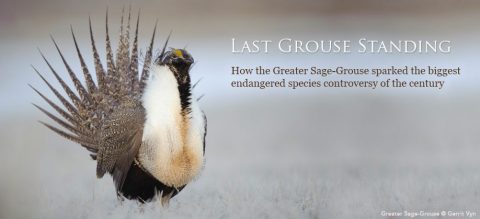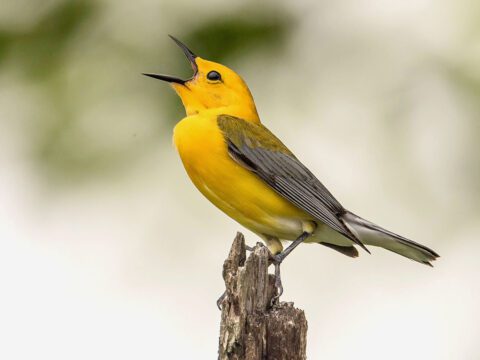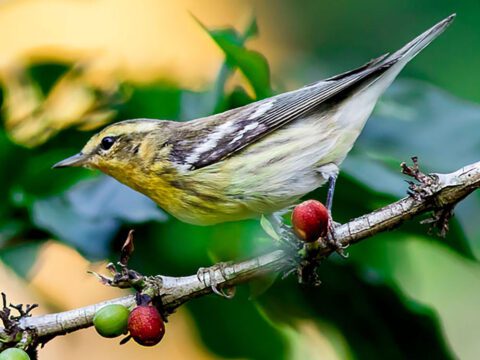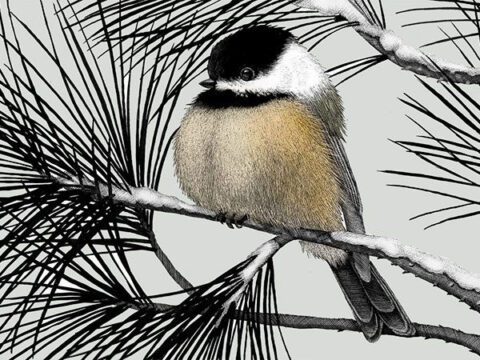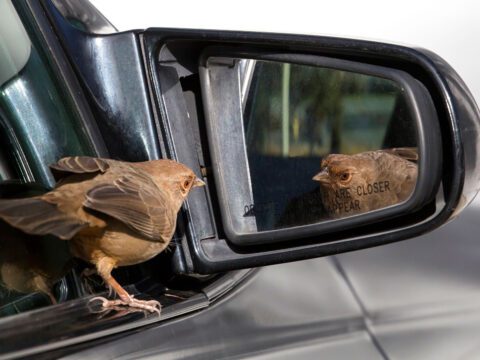Migrants Ride a Green Wave North
By Hugh Powell
From the Spring 2015 issue of Living Bird magazine.
April 15, 2015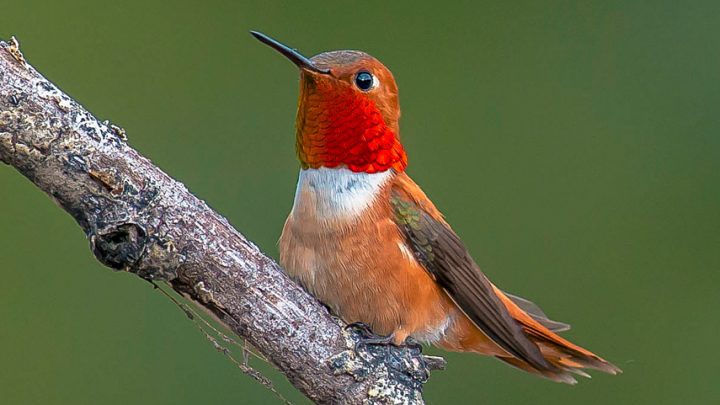
Migratory songbirds enjoy the best of both worlds—foodrich summers and balmy winters—but they pay for it with a tough commute. Their twice-ayear migrations span thousands of miles and are the most dangerous, physically demanding parts of their year.
Surprisingly, for many North American species the best route between summer and winter homes is not a straight line, according to new research published in the Proceedings of the Royal Society B. In spring, the study shows, birds follow areas of new plant growth—a so-called “green wave” of new leaves and numerous insects. In fall, particularly in the western United States, they stick to higher elevations and head directly southward, making fewer detours along the way for food.
“We’re discovering that many more birds than anyone ever suspected fly these looped migrations, where their spring and fall routes are not the same,” said Frank La Sorte, a research associate at the Cornell Lab of Ornithology. “And now we’re finding out why—they have different seasonal priorities and they’re trying to make the best of different ecological conditions.”
The research—the first to reveal this as a general pattern common to many species—may help land managers enhance their conservation efforts by improving their understanding of how birds use habitat seasonally. “
All this information helps us understand where we should focus conservation across time,” La Sorte said. “Then we can drill down and make local and regional recommendations. In the West particularly, the systems are very complicated, but we’re starting to build a nice foundation of knowledge.”
In a 2013 study, La Sorte and his colleagues discovered that many species of North American birds flew looping, clockwise migration routes. But they could only partially explain why. For eastern species, it was clear from atmospheric data that the birds were capitalizing on strong southerly tailwinds in spring over the Gulf of Mexico and less severe headwinds in fall. By adding the effect of plant growth, the new study helps explain why western species also fly looped routes. The study examined 26 species of western birds, including the Rufous Hummingbird and Lazuli Bunting, and 31 species of eastern birds such as the Wood Thrush and Black-throated Blue Warbler. Birds on both sides of the continent showed a strong tendency to follow the flush of green vegetation in spring.
In the relatively continuous forests of the eastern United States this tight association with green vegetation persisted all summer and into fall. In the West, however, green space occurs along rivers and mountains, and is often isolated by expanses of desert or rangeland.
“Western migrants can’t necessarily cross big stretches of desert to get to the greenest habitat when it’s the most green,” La Sorte said. “So in spring, they stick to the foothills where insects are already out. But in fall they tend to migrate along browner, higher-elevation routes that take them more directly south.”
For decades scientists have known that some herbivorous species, including geese and deer, follow the “green wave” of spring vegetation on their northward migrations. La Sorte’s study is the first to extend that idea to insectivorous species, which are tiny (most weigh an ounce or less) and much harder to study using tracking devices.
The researchers solved that problem by using sightings data—lots of it—to substitute for tracking data. They analyzed 1.7 million crowdsourced bird checklists from eBird, a free online birding-list program, to construct a detailed picture of species occurrence for each week of the year. Then they used satellite imagery to determine the amount of new plant growth across the United States.
What emerged was a composite picture of where each species occurred, week by week, that the scientists then compared with satellite-derived estimates of where the most productive habitats were.
“Up till eBird data became available, people have had to look at migration on a species-by-species basis, by tracking individual birds,” La Sorte said. “We’re bringing in the population perspective using big data, and that’s enabling us to describe general mechanisms across species.”
In addition to La Sorte, the paper’s authors include Daniel Fink, Wesley Hochachka, and Steve Kelling of the Cornell Lab, and John DeLong of the University of Nebraska, Lincoln. The research was supported in part by grants from the Leon Levy Foundation, Wolf Creek Foundation, and National Science Foundation.
Reference
La Sorte, Frank A., D. Fink, W. M. Hochachka, J. P. DeLong, and S. Kelling. 2014. Spring phenology of ecological productivity contributes to the use of looped migration strategies by birds. Proceedings of the Royal Society B. 281:20140984.

All About Birds
is a free resource
Available for everyone,
funded by donors like you
American Kestrel by Blair Dudeck / Macaulay Library
